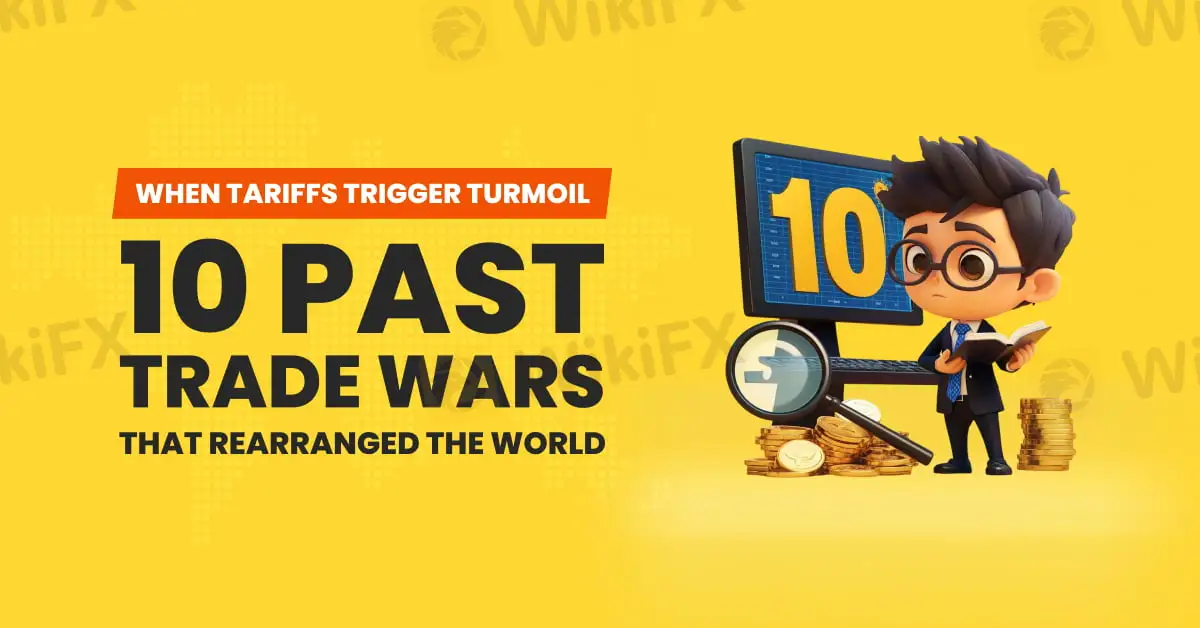简体中文
繁體中文
English
Pусский
日本語
ภาษาไทย
Tiếng Việt
Bahasa Indonesia
Español
हिन्दी
Filippiiniläinen
Français
Deutsch
Português
Türkçe
한국어
العربية
When Tariffs Trigger Turmoil: 10 Past Trade Wars That Rearranged the World
Abstract:Far from being mere policy tools, tariffs and trade restrictions have repeatedly served as catalysts for economic upheaval, diplomatic rifts, and even armed conflict. Here are ten historically significant trade wars that altered the course of nations and the global economy.

Trade wars might seem like issues for economists and politicians, but they have often played a major role in shaping global events. From early tax revolts to recent tariff battles between world powers, these disputes have influenced economies, caused political tensions, and even led to armed conflict. Here are ten key trade wars that left a lasting mark on history.

One of the first trade-related uprisings in the United States began in 1791 when the government put a tax on whiskey. Farmers in Pennsylvania, who used whiskey as a way to make money from surplus grain, felt the tax was unfair. They refused to pay and organised a revolt. The government eventually sent troops to end the rebellion, showing that it had the power to enforce national tax and trade laws.

After the Napoleonic Wars, Britain introduced the Corn Laws in 1815. These tariffs made imported grain more expensive in order to protect British farmers. But the result was higher food prices, which hurt workers in towns and cities. Public pressure led to the repeal of the Corn Laws in 1846, marking the beginning of Britains move toward free trade.

In the mid-1800s, China tried to stop British traders from selling opium, a drug that was causing serious problems across the country. Britain responded by sending warships. Two wars followed: one from 1839 to 1842 and another from 1856 to 1860. China lost both and was forced to sign trade agreements that heavily favoured Britain. These wars weakened Chinas control over its economy and opened the country to foreign influence.

Although slavery was the main cause of the American Civil War, disagreements about tariffs also added to the divide. The North wanted high tariffs to protect its factories, while the South, which relied on exporting crops, wanted low tariffs. These economic differences added more tension to an already divided country.

During the Great Depression, the U.S. introduced the Smoot-Hawley Tariff Act in 1930 to protect American industries. It raised taxes on many imported goods. Other countries responded with their own tariffs, which caused global trade to shrink. Instead of helping the economy recover, it made the situation worse.

In the early 1960s, European countries placed tariffs on cheap American chicken. In 1963, the U.S. responded by taxing European goods such as brandy and potato starch and even German-made Volkswagen vans. While it seemed like a strange dispute, the effects lasted for years and influenced how the U.S. handled car imports.

By the 1980s, Japan had become a major exporter of cars and electronics. The U.S. accused Japan of unfair trade practices and put limits on Japanese imports. Japan agreed to reduce exports to avoid further conflict. This trade war helped shape modern rules around international trade and competition.

In the 1990s, the U.S. and the European Union clashed over banana imports. The EU gave trade benefits to banana producers in former European colonies, mainly in the Caribbean. The U.S., supporting American banana companies, challenged these rules at the World Trade Organization. The dispute lasted for nearly two decades and was finally settled in 2009.

The dispute over softwood lumber between Canada and the U.S. dates back to 1982 but became more serious in the early 2000s. The U.S. says Canada unfairly helps its lumber industry through government support, making Canadian wood cheaper. Tariffs, court cases, and trade talks have continued for years, with no long-term solution.

In 2018, President Donald Trump started a trade war with China by putting tariffs on hundreds of billions of dollars' worth of goods. China quickly responded with its own tariffs. The conflict affected global supply chains and created uncertainty in many industries. Even after some agreements were reached, the trade relationship between the two countries remains tense and hits another climax in 2025.
These ten trade wars show that tariffs and trade rules are not just about economics, but they often reflect deeper political and social divides. Sometimes they protect local industries, but just as often, they cause long-term damage and spark wider conflicts. Understanding the history of trade wars helps us see how closely linked economic policy is to global stability.

Disclaimer:
The views in this article only represent the author's personal views, and do not constitute investment advice on this platform. This platform does not guarantee the accuracy, completeness and timeliness of the information in the article, and will not be liable for any loss caused by the use of or reliance on the information in the article.
Read more

What Happens If You Trade on Illegal Forex Platforms in India?
There are many illegal platforms that offer financial services to clients. These scammers hide the risks involved because their main goal is to steal your money. That’s why it’s so important to understand the dangers of trading on illegal forex platforms

Exposing Trade Capital Limited - Siphoning Millions, Restricting Withdrawals, Charging Extra Fees
Trade Capital Limited is in the news for conducting bad practices as a forex broker. Check out the unethical practices employed by it to scam investors in this article.

5 Serious Warnings About Mirrox! You Can’t Afford to Ignore
Pay Attention! This is a serious warning you shouldn't ignore. Check out this article and know the 5 red flags about the Mirrox that every trader must be aware of.

FXPRIMUS: 5 Things They Don’t Want You to Know
Only scam brokers never disclose the risks present in their trading platforms to their clients. They hide all red flags and aggressively promote their services and products. In this article, you’ll discover the 5 major warnings about FXPRIMUS that you must know before choosing this forex broker .
WikiFX Broker
Latest News
Global stock markets are calling Trump's bluff on tariffs
Trump's tariffs overshadow the pomp and pageantry as Macron meets King Charles
Boeing delivers most airplanes since late 2023 after ramping up 737 Max output
Inflation expectations drift back down to pre-tariff levels, New York Fed survey shows
MT4 vs MT5: A comprehensive comparison in terms of functionality
Top Forex Trading Strategies for the London Session
Swissquote Takes Full Control of Yuh Digital Finance App in Major Deal
Top 5 Forex Pairs Every Trader Should Have on Their Radar
What WikiFX Found When It Looked Into Decode Global
Treasury yields rise as Trump's new tariff rates in focus
Currency Calculator


